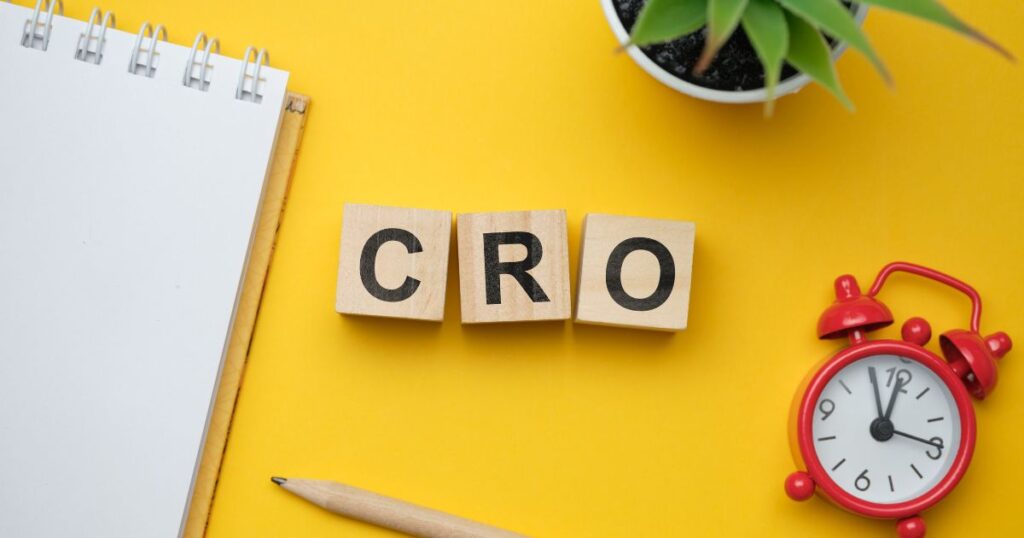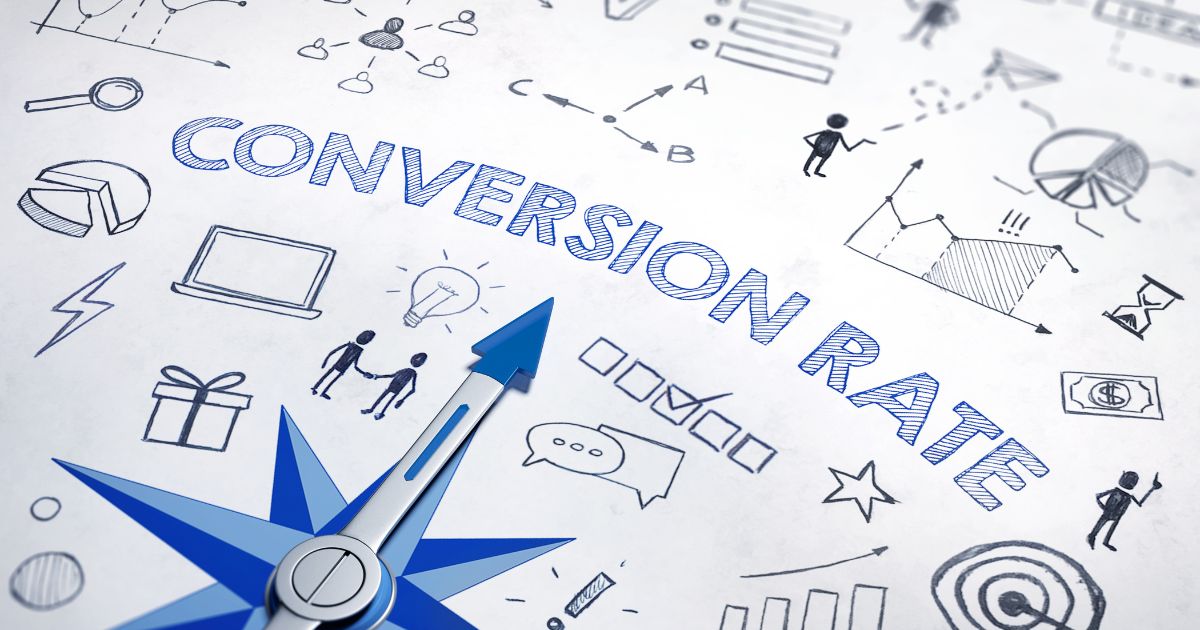Introduction
Conversion rate (CVR) is one of the most important metrics for digital marketers. It basically measures how many of your online visitors performed a desired action. A conversion can be a newsletter signup, playing a video, creating a user profile, filling out a contact form, or making a purchase.
Due to its importance, CVR is a main focus point when marketers need to drive sales or improve profitability (ROI).
In this article, I’ll focus on conversion rate in the context of Ecommerce, as that’s my main field of expertise.
What is the Conversion Rate formula in Ecommerce?
The conversion rate formula varies a bit, depending on where you measure it. On most online stores, including Shopify, CVR is the total number of conversions divided by the total number of sessions. Google Analytics uses the same formula.
Some shop systems calculate it by dividing the number of conversions by the total number of visitors (a visitor can have multiple sessions but usually differences are very subtle). As long you use the same yardstick, it doesn’t really matter.
On most advertising and Email platforms, as the number of website sessions is unavailable, CVR is the total number of conversions divided by the total number of clicks.
While marketers often also measure mini-conversions, like the ones mentioned earlier, in Ecommerce the purchase is the ultimate, most important conversion.
For example, let’s say your run a Shopify store for pet supplies, and in January you had 100,000 sessions and 3,000 orders. According to the CVR formula, your conversion rate was 3%.

Conversion rate shouldn’t be only looked at from a birds-eye perspective of total store sales. Marketers and business owners should also check their CVR on category and product level. Similarly, examining the conversion rates from each marketing campaign is also important, to improve the overall value, and the total ROI as a result.
What affects the conversion rate in Ecommerce?
CVR can vary greatly between verticals and countries and is affected by many different factors. We can differentiate between factors we control (let’s call them internal factors), and others we don’t (external factors).
Internal factors affecting CVR
- User experience: The UX/UI on your website must be great in order to achieve a good CVR. If the page loads too slowly, or if customers can’t find the products they’re looking for, or if they get lost in a complex checkout process, you should improve that.
- Brand awareness: Well-known brands enjoy the advantage of familiarity and trust that smaller brands don’t. This translates into higher conversion rates.
- Pricing: High conversion rates are much easier to achieve with low-ticket products. Phone cases for example can have a 3-5% CVR, whereas a store selling boxspring beds for $1000-2000 might have a 1.5% CVR. As long as the profitability is positive, a low conversion rate can also be ok.
- Promotion: Sales promotions are always great when you need to push sales. In most cases, they will generate an increase in the CVR, but this will also depend on the products on offer, the discount, and what competitors do at the same time (during the holiday season pretty much everyone’s running sales).
- Marketing activities: Digital marketers’ number one job is to generate traffic to the website. But not all traffic is equal. A visitor who clicked on a Google Shopping ad is far more likely to convert than someone who clicked a display banner in his weather app. Moreover, also on a single platform, let’s say search campaigns on Google Ads, some campaigns perform better than others. Marketing teams should keep their eye on all activities to make sure they get the best ROI overall.

External factors affecting CVR
- Seasonality: Different products sell differently throughout the year. Sunglasses are an easy example, but also videogames fluctuate, peaking during the holiday season in Q4. Note that it’s not only that the demand, i.e. the traffic is lower during product low-seasons, but also the purchase intent, that is how much people want to buy it now.
- Weather: Good weather means people spend more time outside enjoying the sun, rather than browsing online for a new pair of shoes.
- Day of the week: Traditionally Sunday and Monday have the highest conversion rate, and Wednesday, Thursday, and Friday are slower days.
- Device type: Mobile traffic in 2023 makes up roughly 55% of total internet traffic, trend increasing. Mobile traffic tends to have a lower conversion rate relative to desktop and tablet traffic, as for most people making an online purchase on a desktop is more convenient.
- Competitor promotion: If a significant competitor is running a sale while you’re not, there’s a good chance many of your prospects will buy from him. Whether you’d like to react with your sale will depend on your marketing strategy and margins.
Whether a conversion rate is good or not for a particular business, depends on traffic volumes, average order value (AOV), and the profit margins.
What is a good conversion rate in ecommerce?
A good average conversion rate depends strongly on what you sell and where you sell it. To help you benchmark your business in a correct context, here are some recent statistics from 2022 and 2023.
According to Oberlo’s study, as of February 2023, the average conversion rates across Ecommerce businesses in the U.S. were at 1.64%.
Oberlo also analyzed the average CVR for some industries:
| Industry | Avg. Conversion Rate |
|---|---|
| Multi-brand retail | 4.08% |
| Pet care and veterinary services | 3.01% |
| Food and beverage | 2.81% |
| Fashion, accessories, and apparel | 2.81% |
| Beauty and personal care | 2.66% |
| Luxury and jewelry | 1.73% |
| Consumer goods | 1.72% |
| Home and furniture | 1.18% |
And here is the average CVR for each of the main digital marketing channels:
| Marketing Channel | Conversion Rate |
|---|---|
| Direct | 3.3% |
| 2.6% | |
| Organic Search | 2.7% |
| Paid Search | 3.2% |
| Referral | 2.9% |
| Social Media | 1.5% |
Note that both paid search (Google Ads) and organic search (SEO) include traffic from brand and non-brand terms. Traffic from brand terms has an exceptionally high CVR, often higher than 10%.
My conversion rate dropped – what happened?
It’s never nice to see a decreasing conversion rate, and unfortunately, there are many possible reasons. Seeing CVR dropping after a sale is over is normal, but if you’ve identified an unexpected drop, here are some things you should look into:
- Start with the checkout. Make sure there are no issues with any payment gateways.
- Recent changes by the IT team. Check with the tech team whether they’ve rolled out any updates. If they have, investigate whether these might be related to the drop, and if necessary revert them.
- Check your tracking. Were any changes made to your tracking on Shopify, Google Tag Manager, or the cookie banner?
- Check whether they’ve been any price increases. In that case, you’ll need to wait for a while to decide whether the higher prices balanced out the CVR drop.
- Check each marketing channel for any big changes. E.g. increased spending on Facebook Ads or Display campaigns.
- Check whether a main competitor started a sale.
- Check whether any of your best-selling products went out of stock.
Conversion rate optimization – how to improve CVR?
Conversion rate optimization is the field of analyzing a store’s conversion rate to uncover opportunities for improvement.

AB testing is probably the most common methodology for that, but there are other ways too. Here are 10 ways to improve conversion rate:
- Improve ad targeting: Analyze your Facebook ads’ performance by location, age, and gender, and see whether should exclude a group that’s a clear money waster. Make sure your ad campaign meets your target audience and most relevant potential customers.
- Off-site AB testing: Test different ad campaigns, messages, and offers to discover what resonates best with your target audience. Notice that your main KPI here should be conversion rate and not click-through rate (CTR). If you identify an ad format, ad copy, product, or landing page that works better than the rest, double down on it and move on to the next AB test. This should be a routine practice in every online marketing campaign that you’re running.
- On-site AB testing: Test changes to different elements on your website. It can be a different call to action, the color of the Add To Cart button, or an exit-intent pop-up offering 10% off. While some on-site AB tests don’t require any technical knowledge, for others you might need the help of your tech team.
- Optimize your PPC campaigns: Pause Google campaigns, ad groups, or keywords that don’t perform and add negative keywords where necessary. You can then shift your budget elsewhere.
- Improve page load speed and UX/UI (navigation, clear CTAs, Add To Cart button above the fold, etc…).
- Social proof: Improve on-site social proof with reviews, testimonials, and user-generated content (UGC).
- Optimize product pages: Improve product descriptions and make sure customers can find all the details they need easily.
- Pricing: Offer more competitive prices (when margins and brand positioning allow).
- Create urgency: Use a countdown timer during discount promotions.
- Free shipping: If you’re not offering it already, consider adding it for all orders, or above a minimum order value.
- Brand awareness: Increase brand awareness activities to drive branded traffic with high purchase intent.
Improving your CVR by 10% will translate into a 10% increase in revenue, given all other things remain equal. Small, gradual improvements on different elements of your website and marketing channels will eventually lead to a significant improvement in revenue, margin, and profitability.
Conclusion
Conversion rate is a critical metric in Ecommerce. Achieving a good conversion rate will play a central role in the business’ financials.
Conversion rates vary between industries and brands and are affected by many factors, both internal and external.
Conversion rate should be analyzed on different levels, not only the overall value for your shop. You should also check it for each product category and product to identify best sellers (opportunities) and slow movers (investigate why and consider selling off), and also check it for each marketing channel and campaign.
Further Reading:
- 19 Reasons for Low Conversion Rate in Ecommerce (and How To Fix Them)
- Digital Marketing Insights From Managing Campaigns for 20 Online Shops
- Google Ad Extensions: Improve Your CTR And Boost Your Sales (With Examples)
- Google Ads vs. Facebook Ads For Ecommerce: Which Advertising Platform Is Better For Your Business?
- How To Build High-Converting Product Detail Pages on Shopify
- Boosting Online Sales with Social Proof: A Shopify Store Owner’s Guide

